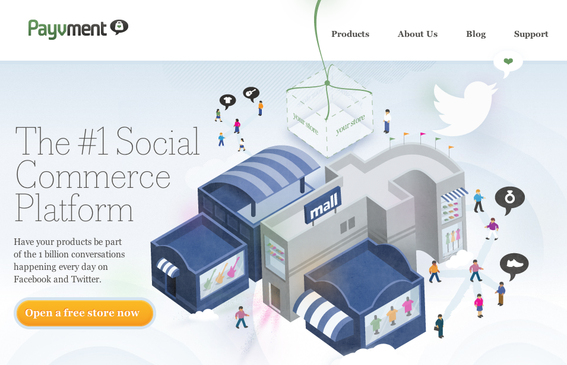Many companies use social media sites to facilitate ecommerce sales. Some of them have attempted to sell products directly on Facebook. Others use social media to spur traffic and sales at their own ecommerce sites. The results of these collective efforts have been mixed.
Some larger companies have closed their Facebook stores — GameStop and J.C. Penney are notable examples — and others report few referrals from their social media activities.
Is Social Commerce Dead?
Does this mean social commerce is dead? The answer is no. Social commerce is not dead. It is growing slowly compared to overall ecommerce, but it is here to stay.
Here is proof.
- Facebook Offers. Facebook recently launched “Offers,” a coupon-like promotion, for any global business with more than 400 Facebook Fans. This will boost to social commerce as consumers will be able to view Offers directly in their Facebook news feeds.
- Funding for startups. Social commerce startups continue to attract funding, such as for the social gifting site Treater and social commerce platform Ondango. Pinterest, the curated shopping site, raised $100 million earlier this year, bringing its total funding to $148 million.
- Examples of success. Fab.com, a retailer of consumer products, recently said that shoppers who use social features on its site purchase more than twice as much as shoppers who don’t.
- Continued innovation. 8thBridge, which created the first 1800Flowers.com Facebook store, has launched Graphite, a new social commerce platform. 8thBridge says the following retailers now use Graphite: American Apparel, Avon, Deb Shops, Dogeared, Elle, Guitar Center, Hallmark, Hayneedle.com, Milly, Nasty Gal, Nine West, Oscar de la Renta, Plum District, and Toms.
- Examples of leading retailers. Zappos.com recently created an app called PinPointing that combines Pinterest and ecommerce. Simply search for a Pinterest user to see a list of product suggestions based on his or her pins and boards.
5 Keys to Social Commerce Success
To build a business on social commerce, remember five key points.
1. User experience is different on social commerce. While some retailers have closed their Facebook stores, others like 1800Flowers.com, ASOS, and Tesco have thrived.
The key differentiator is user experience. The successful ones use the tools of the social platform versus replicating the features of their web stores. A retailer investing in a social commerce presence should start with a clean slate, designing a fresh experience.
2. Set clear goals for social marketing versus social commerce. The goals of social marketing could be customer acquisition costs, number of Likes on a page, popularity of a social campaign based on number of page views, and so on. Social commerce goals, meanwhile, involve revenue targets for products in different regions on different social networks. In most cases social marketing will help achieve the social commerce goals. But there could be instances where the social marketing goals are achieved and the social commerce goals are not, indicating a tweak in the social commerce approach to meet the desired goal.
3. Social marketplaces are a good starting point. If you are just starting out with social commerce, building a site on a marketplace is a good option. Payvment and Moonfruit offer Facebook-enabled marketplaces. Each offers a low starting cost. Each say over 150,000 retailers have signed up — claiming to add about 1,000 retailers every week.

Payvment offers a social commerce marketplace, on Facebook.
4. Extend your existing store. If social marketplaces are not the right channels for your business, you can set up your own social commerce presence. There is no need to build a separate social commerce store, as several existing options can help. StoreYa.com and Beetailer.com, for example, allow integration with leading ecommerce platforms like Magento, Shopify and PrestaShop. These options also enable automatic syncing between your web store and social commerce store, eliminate dual updating.
5. Measure success of your social commerce presence. Social media generates large volumes of data because of the interactions between the different users. It is important to analyze this data, in near real time, to gauge the customer sentiment related to your company and the products. Large retailers have customer service teams proactively monitoring the social networks for customer complaints and questions. Large companies also use analytics tools like Radian6 and Moontoast.com to measure customer sentiment, among other metrics.
Summary
Social commerce is new. Before you invest in it, try a few different options. This is similar to the A/B testing approach for web commerce — each option will require at least a few weeks to gauge success. As social commerce matures, the best is yet to come.




